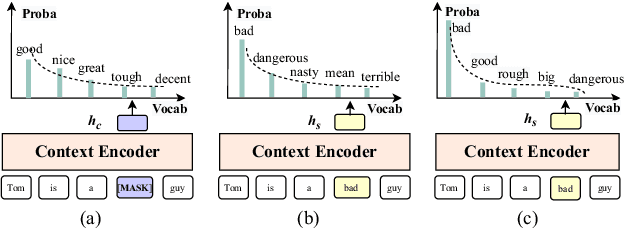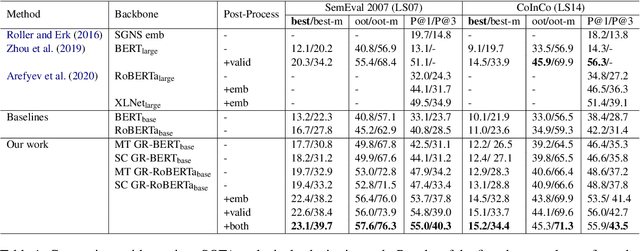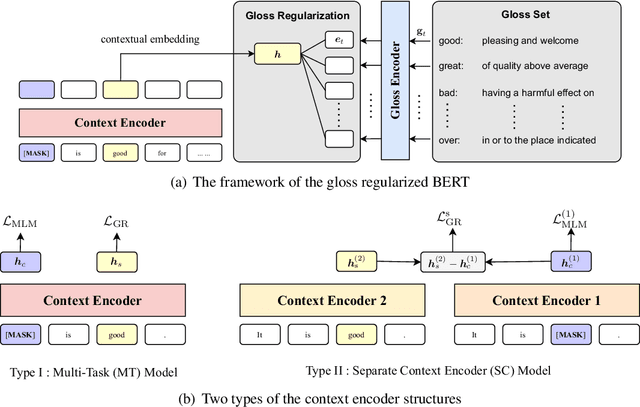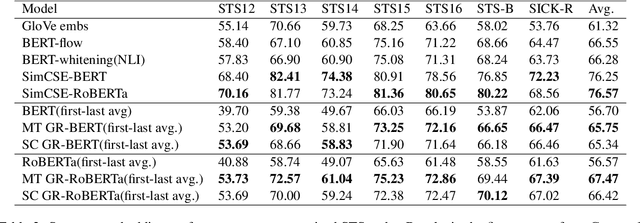Zhecheng An
CIF-PT: Bridging Speech and Text Representations for Spoken Language Understanding via Continuous Integrate-and-Fire Pre-Training
May 27, 2023Abstract:Speech or text representation generated by pre-trained models contains modal-specific information that could be combined for benefiting spoken language understanding (SLU) tasks. In this work, we propose a novel pre-training paradigm termed Continuous Integrate-and-Fire Pre-Training (CIF-PT). It relies on a simple but effective frame-to-token alignment: continuous integrate-and-fire (CIF) to bridge the representations between speech and text. It jointly performs speech-to-text training and language model distillation through CIF as the pre-training (PT). Evaluated on SLU benchmark SLURP dataset, CIF-PT outperforms the state-of-the-art model by 1.94% of accuracy and 2.71% of SLU-F1 on the tasks of intent classification and slot filling, respectively. We also observe the cross-modal representation extracted by CIF-PT obtains better performance than other neural interfaces for the tasks of SLU, including the dominant speech representation learned from self-supervised pre-training.
Improving Contextual Representation with Gloss Regularized Pre-training
May 13, 2022



Abstract:Though achieving impressive results on many NLP tasks, the BERT-like masked language models (MLM) encounter the discrepancy between pre-training and inference. In light of this gap, we investigate the contextual representation of pre-training and inference from the perspective of word probability distribution. We discover that BERT risks neglecting the contextual word similarity in pre-training. To tackle this issue, we propose an auxiliary gloss regularizer module to BERT pre-training (GR-BERT), to enhance word semantic similarity. By predicting masked words and aligning contextual embeddings to corresponding glosses simultaneously, the word similarity can be explicitly modeled. We design two architectures for GR-BERT and evaluate our model in downstream tasks. Experimental results show that the gloss regularizer benefits BERT in word-level and sentence-level semantic representation. The GR-BERT achieves new state-of-the-art in lexical substitution task and greatly promotes BERT sentence representation in both unsupervised and supervised STS tasks.
Towards Diverse Paraphrase Generation Using Multi-Class Wasserstein GAN
Sep 30, 2019



Abstract:Paraphrase generation is an important and challenging natural language processing (NLP) task. In this work, we propose a deep generative model to generate paraphrase with diversity. Our model is based on an encoder-decoder architecture. An additional transcoder is used to convert a sentence into its paraphrasing latent code. The transcoder takes an explicit pattern embedding variable as condition, so diverse paraphrase can be generated by sampling on the pattern embedding variable. We use a Wasserstein GAN to align the distributions of the real and generated paraphrase samples. We propose a multi-class extension to the Wasserstein GAN, which allows our generative model to learn from both positive and negative samples. The generated paraphrase distribution is forced to get closer to the positive real distribution, and be pushed away from the negative distribution in Wasserstein distance. We test our model in two datasets with both automatic metrics and human evaluation. Results show that our model can generate fluent and reliable paraphrase samples that outperform the state-of-art results, while also provides reasonable variability and diversity.
 Add to Chrome
Add to Chrome Add to Firefox
Add to Firefox Add to Edge
Add to Edge